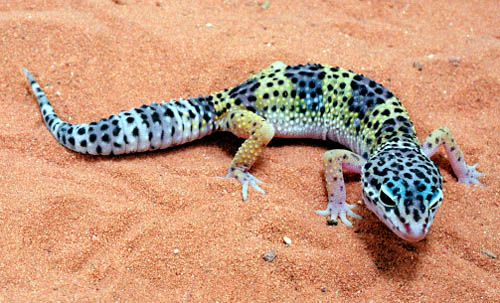Your Legal Resource
Geckos As Pets
Pet Geckos
Geckos are normally little to medium-sized reptiles that are local to the hotter pieces of the world. There are more than 1,600 distinct types of geckos yet not every one of them is ordinarily kept as pets. The geckos that are frequently kept as pets are ordinarily under a foot long and have life expectancies somewhere in the range of 10 and 20 years. On account of their little size and long life expectancy, geckos have become extremely well-known pets however their consideration can in any case shift some between species.
A handful of gecko species have grown in popularity as pets:
There are of course many other types of geckos both in the wild and as pets but these other species are not as commonly seen as the aforementioned.
If you want a pet gecko, it's best to acquire a captive-bred one from a reputable breeder. If you take in a wild-caught gecko you won't know what diseases or ailments it may be carrying. Look for a gecko that has clear eyes, skin without dry patches, all its fingers, toes, and its tail, as well as a healthy appetite.
Gecko Housing
Care necessities will fluctuate some from one animal varieties to another yet generally, geckos should be kept in enclosures that have branches accessible for climbing, a water bowl, a concealing spot, and secure covers. Geckos can escape through little openings so an aquarium with a tight-fitting top is suggested for lodging geckos. Most geckos just require a 10 or 20-gallon aquarium since they are little reptiles yet bigger species will require more space.
Warming and Humidity for Geckos
The best temperature range for most geckos is somewhere in the range of 70 and 90 degrees however some require higher relaxing temperature regions into the 100's. These high temperatures are accomplished using heat lights and warming cushions. A legitimate temperature inclination ought to be given in the suitable temperature range for the particular types of gecko you are focusing on. This commonly implies one side of the nook will be in the '70s while the opposite side will be in the '90s or 100's.
Taking care of Geckos
Never snatch a gecko by the tail as they will frequently drop their tails (a characteristic guard against hunters). Be that as it may if this ought to occur there is no compelling reason to freeze. It will develop back even though it's anything but an alternate shape or potentially shading. The gecko ought to all around take care of and unmistakably isolated from any pen mates until the tail has regrown.
Normal Gecko Health Problems
Geckos are not safe from medical issues. Probably the most generally seen illnesses include:
Stomatitis - Also called mouth decay, stomatitis is just about as gross as it sounds and should be treated ahead of schedule as could be expected. You'll see rosy staining around the gecko's mouth and potentially a few discharge which appears as though curds.
Respiratory issues - A gecko that is wheezing or slobbering may have a respiratory infection. These are typically caused by a draft or low temperatures in the container.
Parasites - Both inner and outer, geckos likewise are often tormented with parasitic diseases. Worms and tiny eggs might be in the dung and little parasites might be on the outside of the skin. Parasitic diseases on the skin will seem as though a red rash or you may see your gecko experiences issues shedding while inner parasites can cause languor, changes in hunger, and surprising droppings.
Dysecdysis - This extravagant word for issues shedding is a major issue for geckos who don't have legitimate mugginess in their fenced-in areas.
